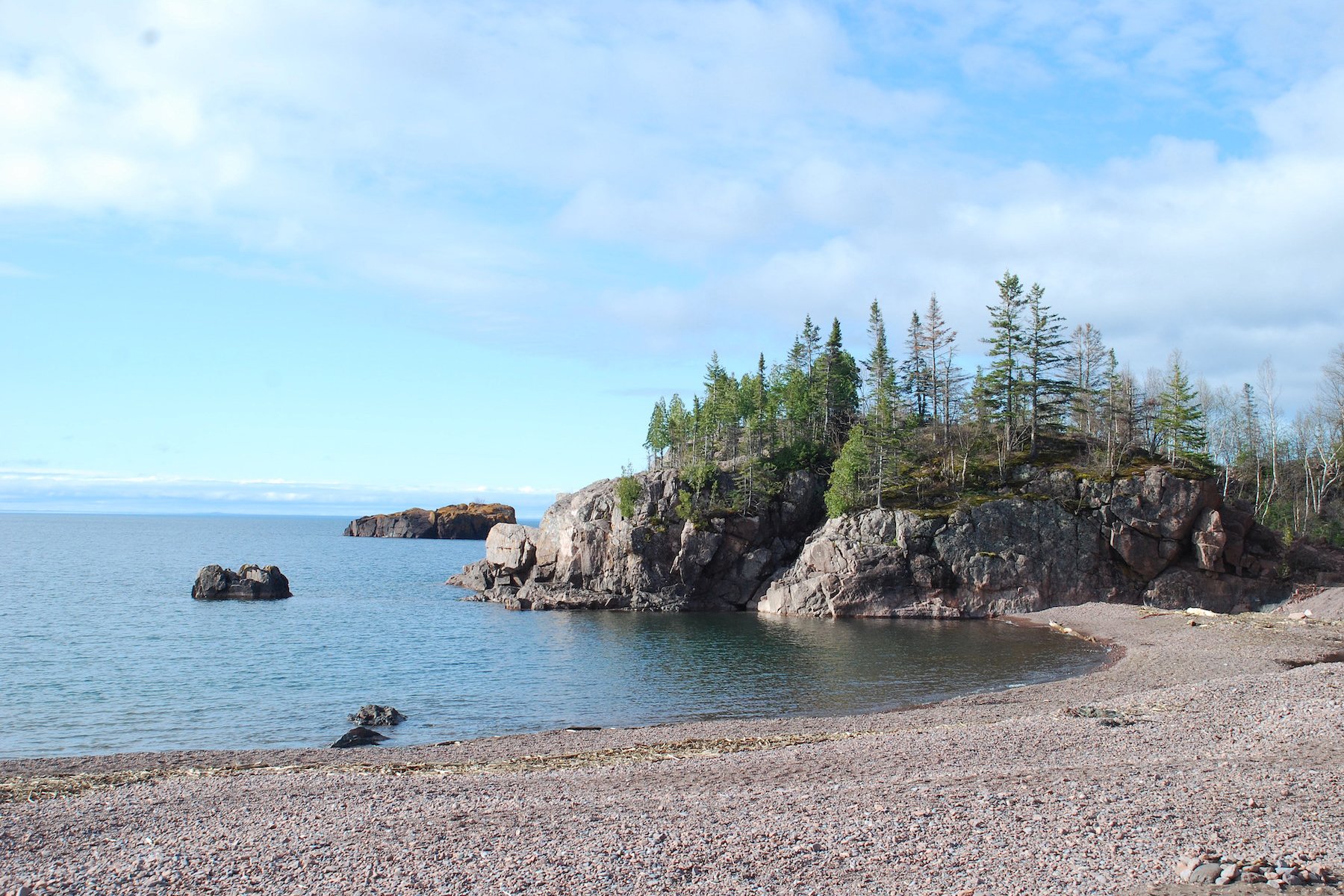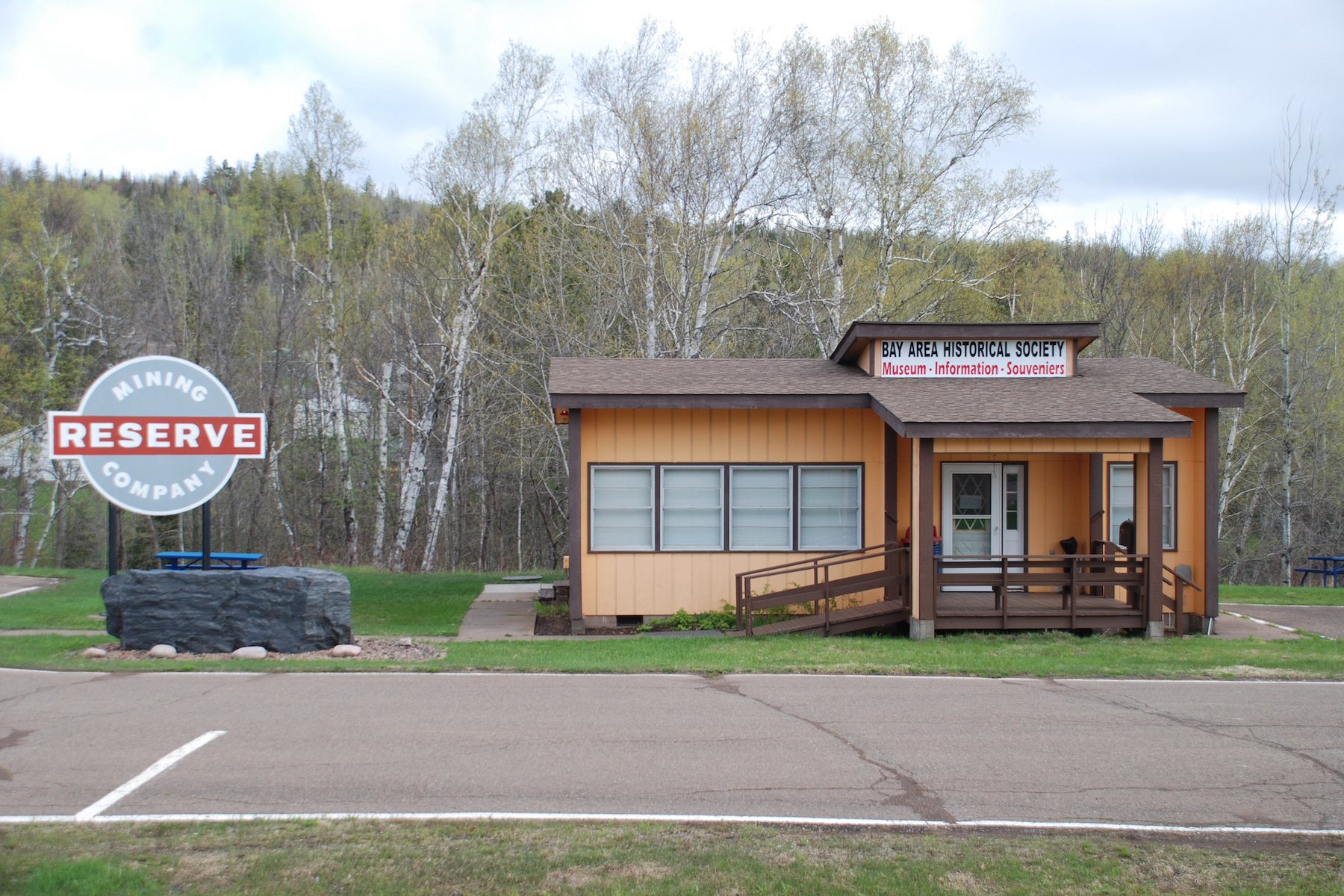Silver Bay Looks to the Future with AIA Minnesota’s Minnesota Design Team
The North Shore community invites a group of volunteer design and planning professionals to town to facilitate community discussion and visioning
By Justin R. Wolf | June 30, 2022
Some 150 Silver Bay residents filled Reunion Hall on May 20 for a community meeting led by the Minnesota Design Team. Photo by Justin R. Wolf.
FEATURE
Silver Bay, just an hour’s drive from Duluth, can be easy to miss. Motorists on Highway 61 don’t pass through it, as they do Two Harbors, nor is there much in the way of signage that beckons them to stop and stay awhile. A community of just over 1,800 residents, Silver Bay was founded in 1954 as a company town for employees of the Reserve Mining Company (now Cleveland-Cliffs), a taconite processing plant right on the lake’s edge. Consequently, the town has been perceived by some as an industrial pocket and little else. But Silver Bay is highly walkable and charming, with a wealth of natural resources. According to Stephan Roos, Allied AIAMN, a coleader of the Minnesota Design Team (MDT), Silver Bay represents “possibly the last undeveloped tourist town on the North Shore.”
In late 2021, Silver Bay’s Economic Development department invited MDT—an AIA Minnesota program in which volunteer planning and design professionals assist rural communities with their planning needs—to spend a spring weekend in town meeting with residents and helping the community develop a vision for its future. In the months leading up to a community visit, MDT members work closely with civic leaders to gather information and coordinate a weekend of tours and small- and large-group meetings.
The visit was well timed because city officials and residents alike sense that opportunities are afoot. Along its inland borders, Silver Bay is hugged by an abundance of trails and campsites. Its lakefront includes the stunning Black Beach, and a few miles up the shore is Tettegouche State Park. Among the roughly 150 community members who attended the main MDT event on a Friday night in May, many were eager to talk about approaches to enhancing the town’s infrastructure and design.
Photos 1–4: Facilitated discussions at the May 20 community meeting. Photos 5–7: Silver Bay’s Reunion Hall, Black Beach, and Bay Area Historical Society building, respectively. Photos by Justin R. Wolf.
“MDT’s ideas are only representations of what could be,” Roos had said in an earlier interview. “What matters is that people are motivated and take charge. Our real value is in facilitating community engagement.”
Reunion Hall began to fill nearly an hour before the meeting, with attendees in conversation at several tables. Tracy, Silver Bay’s former postmaster and a resident of 36 years, is an advocate for more housing and diversifying the town’s businesses. “Cliffs is not what it used to be,” she said, referencing the mining operator’s steady decline in workforce since 2016. “We need the economic momentum [to realize real change].”
One table over were retirees Anne, Sue, and Daryl, all hiking enthusiasts. “The mining is never going away,” said Daryl. “We just need to rely less on the mine; for so long, it dictated how this town functioned.” He reasoned that Silver Bay needs “to diversify enough” to attract more tax dollars. “Maybe a town square, more trees, less parking.” He, too, noted a lack of housing options: “There’s no place to rent here.”
“MDT’s ideas are only representations of what could be. What matters is that people are motivated and take charge. Our real value is in facilitating community engagement.”
“We’re all about growth—more businesses, more housing,” said Kirsten and Wes, a young married couple with four dogs. They lamented Silver Bay’s lack of a dog park and residents’ frequent inability to visit Black Beach due to the parking lot “filling up with tourists.”
“Tourist dollars are doing more harm than good,” said longtime resident Jim, citing pollution and other environmental concerns. His demeanor suggested he was there as a check on the system. When asked if he shared the concerns of other attendees over a shortage of housing, he said, “There are plenty of lots that can be filled. But if we can’t fix what we already have, there’s no use in growing.”
With the hall overflowing, Roos, microphone in hand, greeted the gathering on behalf of the 11 MDT members and six student volunteers. “We’re here to find out what you want for your community,” he said. He then introduced four prompts for attendees to discuss in groups, with the MDT facilitators moderating the discussions and consolidating feedback. The prompts were, in order:
What are your three favorite things about Silver Bay?
What are three things you would like changed?
Describe your future vision for Silver Bay.
What’s important to you that we didn’t ask?
For the next hour, the hall was filled with chatter, the occasional monologue barely registering above the crowd noise. There were more than a few skeptical looks. Once all the groups’ responses were recorded on easel pads, the participants were invited to peruse the results and place a checkmark next to their five favorite answers.
Silver Bay Mayor Wade LeBlanc moved about the front of the hall, striking up conversations as his constituents came and went. “Every town on the North Shore is short on housing,” he said. “This meeting is all above and beyond the day-to-day business of running a city. This is where you get your opinions.”
Silver Bay’s recreational resources, remote locale, easy lake access, slow pace of life, sense of community, and low crime rate were all at or near the top of residents’ lists. Opinions on what needed changing likewise didn’t deviate much from what Tracy, Daryl, Kirsten, Wes, and others had noted earlier in the evening: Residents generally want more housing and more housing options, as well as more commercial activity with a greater diversity of businesses and services.
Notably, the optimism in the room was tempered by an undercurrent of concern. “There’s a recession coming,” said one resident, more than once. Inflation and rising gas prices are taking a toll on the community. On the matter of infrastructure investments, the notion of spending money that wasn’t there, or might not be there next year, had many participants on edge.
On Saturday, the MDT volunteers collated the community feedback, a set of illustrated ideas and recommendations, and a preliminary list of resources (organizations and programs) into a 35-slide presentation, which they shared with the community that evening. The team encouraged residents to embrace change—to use it as an opportunity to build on Silver Bay’s unique character, enhance its recreational assets for users of all ages and abilities, and grow its retail and service offerings for locals and tourists alike.
As Outer Drive ascends from Highway 61 into town, it passes a Minnesota Veterans Home and the modest Bay Area Historical Society building. A nearby residential pocket along the valley’s edge is lined with trees and sidewalks. It doesn’t take long for a visitor to grasp why residents take such pride in their town. It’s a pride defined by cautious optimism. The community wants to maintain a pace of life that precludes the need to lock one’s doors at night. At the same time, residents want to grow, improve, and share their community with others.




![DSC_0007[72].JPG](https://images.squarespace-cdn.com/content/v1/5f6e6d93e5464d602d0929d2/1656360414453-84SDF7GCX0ZBC88HT511/DSC_0007%5B72%5D.JPG)



